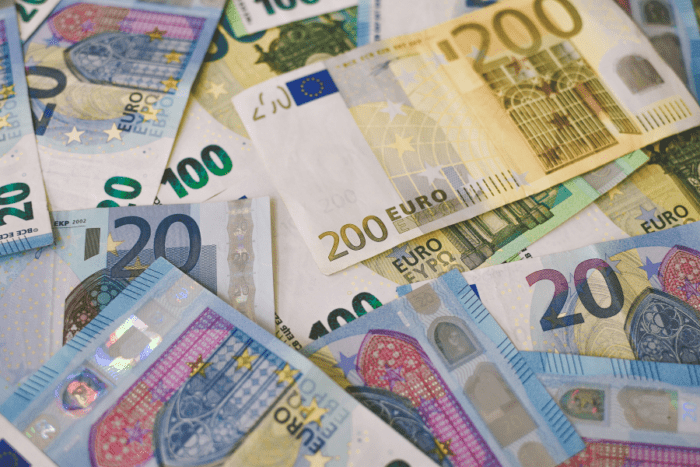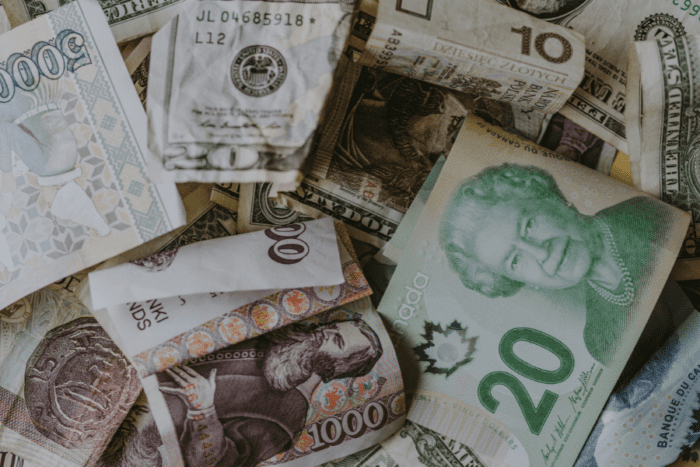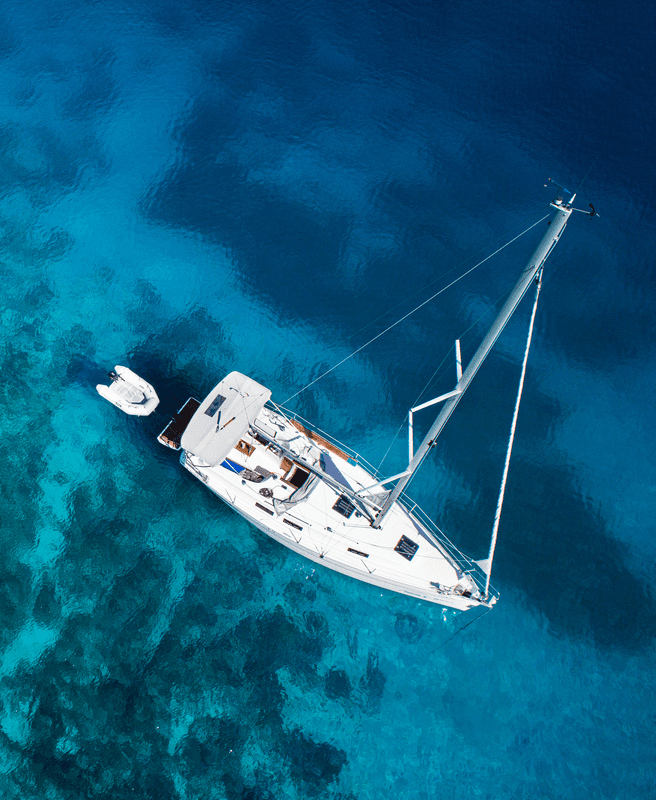The Largest Value Banknotes in the World
July 18, 2025
Even if you appreciate the value of holding cash, you probably don’t like the idea of carrying around a brick of currency worth a few hundred bucks.
In that case, you will appreciate a list of the largest banknotes in circulation. It makes for interesting reading, as we’ve seen the historical cancellation of large-value banknotes across the globe.
In the United States, the bills for US$500, US$1,000, US$10,000 and US$100,000 have already been consigned to the dustbin of history. The trend seems to be continuing, with talk of removing the US$100 bill from circulation in recent years despite its popularity.
Still, if the United States has a growing aversion to cash, things are even worse in Europe.
The €500 banknote has not been included in the Europa series or been in circulation since April 2019. If you still happen to hold some, it continues to be legal tender and can be used as a means of payment.
So, while we’re still able to enjoy the look of surprise on the cashier’s face when we produce a mega note, let’s take it for every penny it’s worth.
If you’re seeking a place that values your hard-earned cash and ensures more of it stays in your pocket, then our team at Nomad Capitalist is here to help. Become a client today and find out how.
The War on Cash
All around the world, the war on cash is intensifying.
The introduction of Central Bank Digital Currency (CBDC) will have far-reaching consequences on the global financial system.
Digital banking is on a seemingly unstoppable rise and, with privately held digital assets also growing, CBDCs could usher in a new global financial era, accompanied by the phasing out of cash in exchange for a government-regulated CBD system.
CBDCs are currently being explored and, in some cases, introduced as official currency by governments in more than 130 countries.
It’s no secret that physical cash is losing its popularity, which is leading to its decline. In fact, a significant number of Americans rely solely on online banking services, while the use of cash in Europe is also decreasing. Trends like these often cause central banks to reconsider the role of cash in the monetary system.

It’s undeniable that major economies like the US, the Eurozone and China are developing their own central bank digital currencies.
At Nomad Capitalist, we prefer to stay away from the doom and gloom when discussing the modern war on cash. There’s nothing wrong with using credit cards when you earn points, including credit cards issued by US banks like American Express.
However, the West seems particularly zealous in the war on cash.
Bankers in the Middle East quietly relate stories of pallets of cash arriving at the door of the bank and being wheeled into the backroom. Or travel to Hong Kong during Chinese New Year and watch bank tellers wheeling piles of small bills out to eager well-wishers at a neighbourhood branch.
While we have long been familiar with banknotes such as Singapore’s now-endangered S$10,000 note, we wanted to discover all of the largest banknotes in circulation.
10,000 Singapore Dollars (SGD)
For some time, Singapore held the world record for the largest value of a single banknote.
Until recently, you would have to fly out of Singapore with three of them – worth S$30,000 – before triggering currency reporting requirements. Sadly, Singapore is becoming a bit more conformist as they decreased their reporting requirements to S$20,000.
Presumably, for similar reasons, the Singapore Monetary Authority discontinued the issuance of the $1,000 note on January 1, 2021, stating the measure was to mitigate money laundering and terrorism financing risks.
However, S$1,000 notes in circulation are still legal tender and continue to be a means of payment.
Value in USD: $7400 (as of April 2024).
10,000 Brunei Dollars (BND)
Here’s an interesting loophole: the Brunei dollar is issued and controlled by the Monetary Authority of Brunei Darussalam and, therefore, totally under the control of the oil-rich microstate.
However, thanks to a currency interchangeability agreement from the 1960s, Brunei’s currency can be freely changed into Singapore dollars. That means that even as Singapore plans to phase out its own B$10,000 note, Brunei can issue the same denomination with the same value.
While there are no guarantees as to how easily Singapore money changers will accept high-value Brunei notes in the future, we are confident that Brunei is wealthy enough not to bow to pressure from foreign powers to axe the B$10,000 note.
Value in USD: $7404 (as of April 2024).
1,000 Swiss Francs (CHF)
While Swiss banking is almost entirely off-limits to US citizens and those without large bank balances, Switzerland has bucked the Western trend of eliminating high-value banknotes by maintaining its 1,000 franc note.
Best of all, the Swiss government has indicated that the purple note is here to stay, which is perhaps no surprise as roughly half of all Swiss cash in circulation (50 billion francs, worth US$56 billion) is held in 1,000 bill notes.
As with other high-value banknotes, most Swiss have never seen their currency’s largest bill, but their central bank believes the size of a banknote has no impact on efforts to combat crime.
In terms of its being a store of value, a recent report cited that almost 50 billion francs are held in 1,000 franc notes, which is over half of all the Swiss cash in circulation.
Value in USD: $1102 (as of April 2024).
1,000 Singapore Dollars (SGD)
Singapore made our list twice, this time with its S$1,000 note. Unlike its larger counterpart, the S$1,000 notes are readily available.
As an experiment, our founder, Andrew Henderson, recently brought 3,000 Malaysian Ringgit to Singapore to exchange and deposit into his Singapore bank account and there was no shortage of money changers in ‘Change Alley’ willing to offer him excellent rates.
Ultimately, he walked away with the supersized note, which is larger than almost any other banknote he’s held.
Value in USD: $740 (as of April 2024).
1,000 Emirati Dirhams (AED)
Not only is the United Arab Emirates (technically) a non-extradition country, but it’s also at the forefront of the fight against the War on Cash.
While some mass market Emirati banks won’t want to accept huge stacks of notes, hard ‘cash’ is not a dirty word in the Emirates and its central bank reportedly has no plans to discontinue this higher-value note.
Like the Hong Kong dollar, dirhams are pegged to the US dollar at the rate of 3.675 to 1, meaning your dirhams offer any perceived stability of US dollars with the ease of use and convertibility in a country that is happy to deal in actual paper money.
Value in USD: $272 (permanent peg).
100,000 Armenian Dram (AMD)
The tiny country of Armenia is actually the issuer of one of the world’s largest banknotes in circulation today.
The Armenian dram has a historically high conversion rate of about 500 to one US dollar, leading to a six-figure denomination banknote. The dram features the same beautiful imagery as seen on the Georgian lari, and the largest note features the historical ruler Abgar V of Edessa.
The Armenian central bank rolled out a new third series of banknotes in 2018, which omits the 100,000-dram note, but there has been no explicit mention that it will not be allowed to circulate.
Value in USD: $256 (as of April 2023).
1,000 Hong Kong Dollars (HKD)
While Hong Kong’s HK$1,000 notes are not worth much more than a US$100 bill from the United States, they do offer several advantages over the greenback.
For one, Hong Kong practises sound monetary policies help ensure the value of its currency in a way the US does not. What’s more, investors like Jim Rogers have suggested that Hong Kong de-peg from the narrow band of the US dollar and instead re-peg to the Chinese renminbi at par or even discontinue the dollar in favour of RMB altogether.
If that were to happen, the Hong Kong dollar would likely see instant double-digit appreciation. As China continues to assume greater powers over the island, this becomes more probable.
In the meantime, holding Hong Kong dollars is essentially the same as holding US dollars but with potentially greater flexibility.
Value in USD: $128 (permanent peg).
The Largest Value Banknotes in the World: FAQs
By certain definitions, Zimbabwe had the largest note ever printed, equalling 100 trillion Zimbabwe dollars (ZiG). However, it does not qualify as the largest banknote because it was printed due to hyperinflation in the nation and is worth less than US$0.50.
No, the US discontinued its US$1,000 bill back in 1969. Today, the largest banknote in the US is the US$100 bill.
No, the UK does not print £1 million banknotes. These bills were never actually in circulation, but they were used for accounting purposes in the past and were actually bank certificates.
The Iranian Rial is the weakest currency in the world. One Iranian Rial is currently valued at approximately US$0.000024.
The Kuwait Dinar has long held the position as the strongest global currency. Currently, one Kuwait Dinar trades for approximately US$3.50.
Currently, 180 currencies are recognised by the United Nations (UN).

Secure the Value of Your Cash and Assets
These are the largest value banknotes in the world but, historically, these notes are worth a fraction of past high-value paper currency.
However, past issues like the United States US$100,000 bill are now collector’s items that trade at (far more than) their face value, making them extremely expensive to acquire and hard to trade.
If governments and central banks forge ahead with their digital currency plans, high-value banknotes may become a thing of the past. This should, however, not dissuade you from exploring currency diversification – just one of the many benefits of offshore banking.
At Nomad Capitalist, our goal is simple. We provide successful entrepreneurs and investors with high-level services to solve their problems by reducing taxes, getting second citizenship, investing overseas and living the Nomad Capitalist lifestyle. To create your bespoke plan, become a client today by applying here.


Does Puerto Rico Pay Taxes to the US?
It’s a common question and one that often fuels confusion, debate, and a fair share of misinformation – Do residents of Puerto Rico actually pay US federal taxes? When most people think of US tax obligations, they naturally assume they apply uniformly across all US citizens. But when it comes to Puerto Rico, things are […]
Read more

Zug Canton Taxes: The Ultimate Destination for Wealth Management in Switzerland
Switzerland’s global reputation is built not just on stunning views of Alpine peaks and serene lakes but also on a foundation of exceptional quality of life, world-class infrastructure and investor-friendly tax policies. The results speak for themselves: efficient public transport seamlessly links cities and villages; the standard of living regularly ranks among the highest in […]
Read more

How Smart Investors Use Venture Capital to Build Wealth
Big companies like Google, Amazon, Facebook and Apple all started out as bold ideas backed by venture capital. Decades later, the same firms are household names, as familiar to most people as electricity, the internet, or the telephone. But hindsight is a fickle friend. The truth is, it wasn’t always so obvious they’d succeed. These […]
Read more





